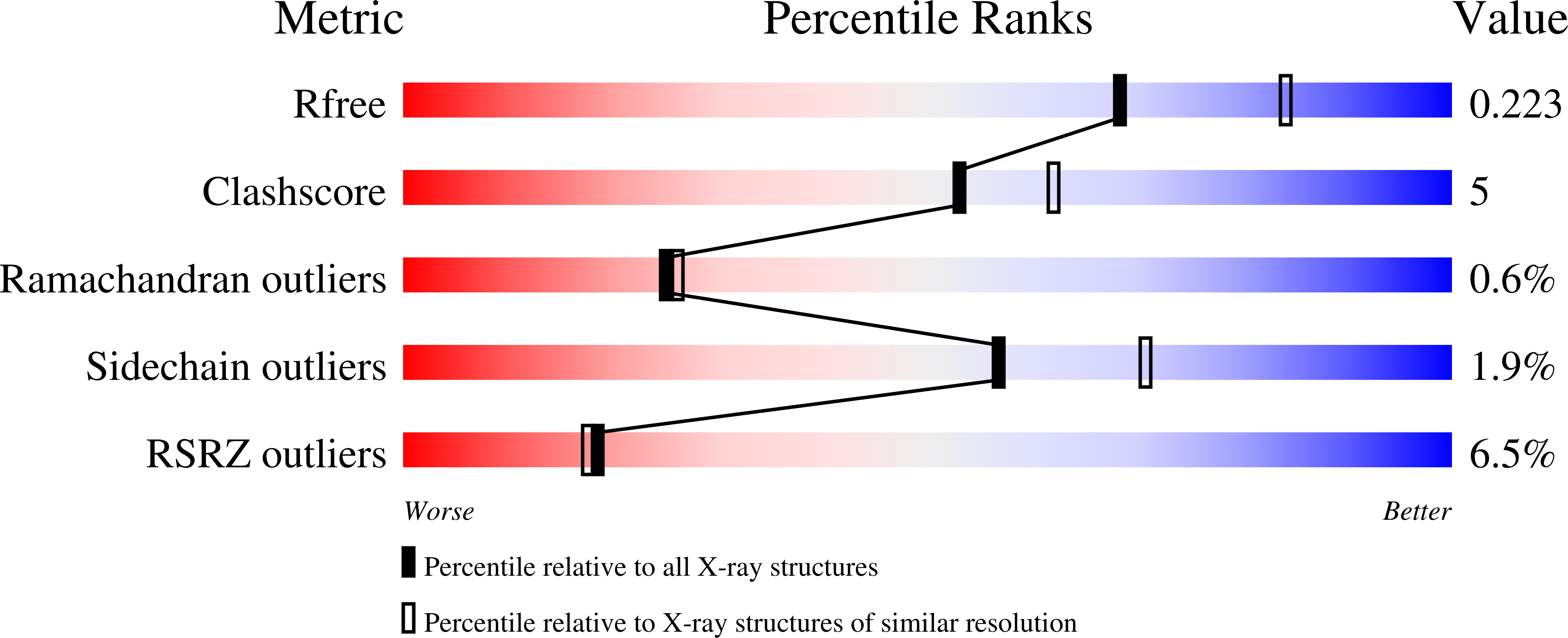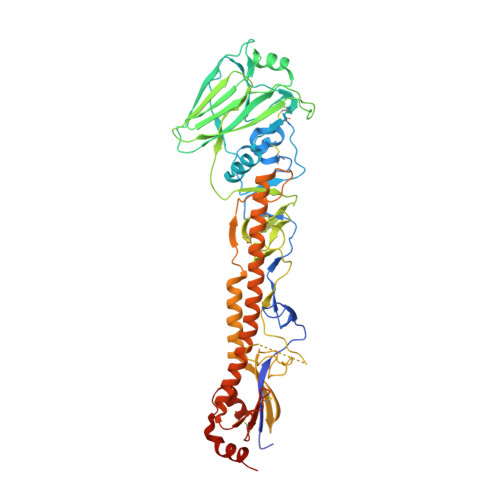Structure and receptor binding preferences of recombinant human A(H3N2) virus hemagglutinins.
Yang, H., Carney, P.J., Chang, J.C., Guo, Z., Villanueva, J.M., Stevens, J.(2015) Virology 477C: 18-31
- PubMed: 25617824
- DOI: https://doi.org/10.1016/j.virol.2014.12.024
- Primary Citation of Related Structures:
4WE4, 4WE5, 4WE6, 4WE7, 4WE8, 4WE9, 4WEA - PubMed Abstract:
A(H3N2) influenza viruses have circulated in humans since 1968, and antigenic drift of the hemagglutinin (HA) protein continues to be a driving force that allows the virus to escape the human immune response. Since the major antigenic sites of the HA overlap into the receptor binding site (RBS) of the molecule, the virus constantly struggles to effectively adapt to host immune responses, without compromising its functionality. Here, we have structurally assessed the evolution of the A(H3N2) virus HA RBS, using an established recombinant expression system. Glycan binding specificities of nineteen A(H3N2) influenza virus HAs, each a component of the seasonal influenza vaccine between 1968 and 2012, were analyzed. Results suggest that while its receptor-binding site has evolved from one that can bind a broad range of human receptor analogs to one with a more restricted binding profile for longer glycans, the virus continues to circulate and transmit efficiently among humans.
Organizational Affiliation:
Influenza Division, National Center for Immunization and Respiratory Diseases, Centers for Disease Control and Prevention, Atlanta, GA 30333, USA.

















